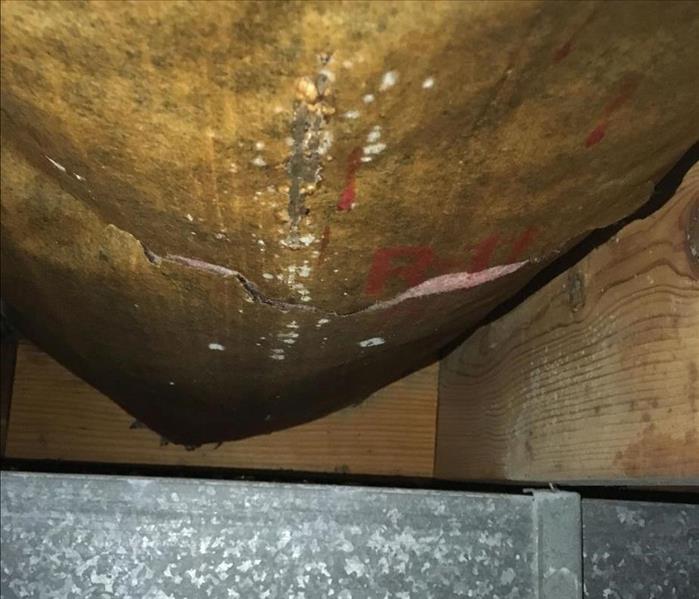Damp Places Loves Mold
2/15/2018 (Permalink)
What Does Mold Need to Grow?
According to Michael Pugliese, author of The Homeowner’s Guide to Mold, there are three main necessities that mold spores need to grow and thrive:
- Moisture
Mold spores need moist or damp areas to grow and reproduce. Watch for flooding, leaky pipes or windows, etc. Also excess moisture in the bathrooms, kitchens, and laundry rooms are prime areas for mold growth.
- Food
Mold spores need food – in the literal sense as well as other materials (i.e. cotton, leather, wood, paper products and others). The most dangerous materials mold loves to grow on, are porous materials (beds, couches etc.). It’s often impossible to remove mold growth from these items.
- Optimum Temperatures
Mold spores thrive in temperatures 32 and 120 degrees Fahrenheit. Temperatures from about 70 – 90 degrees are the most conducive for mold growth. Chances of mold growth are heightened greatly between those temperatures. You may be wondering why mold can grow in your freezer. Mold doesn’t die when temperatures drop below 32 degrees, they lay dormant until temperatures raise, or they are set out to warm up.
Favorable Conditions for Mold
Michael Pugliese, author of the same book previously mentioned, also offers 5 tips describing favorable or unfavorable conditions for mold growth:
- A relative Humidity of roughly 50% or higher
A good preventative measure would be to purchase a hygrometer to measure humidity levels in your home.
- Damp or Dusty Conditions
Avoid developing piles of rags, clothing or other mold food sources.
- Stagnant air
This explains why overly “tight” homes designed for energy efficiency can have mold problems.
Unfavorable Conditions for Mold
- Ventilation
Good circulation throughout the home is important to eliminate dampness or potential moisture; especially in attics, basements, crawlspaces, laundry rooms.
- Dry Air Indoors
Make sure to keep your home’s relative humidity down below 50%.
-Source: Mold Blogger






 24/7 Emergency Service
24/7 Emergency Service
